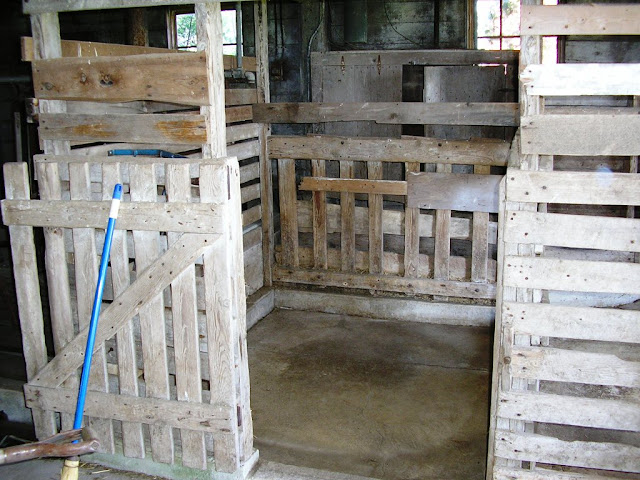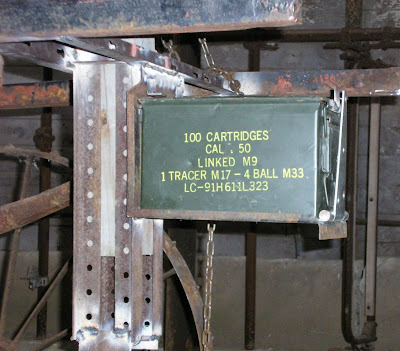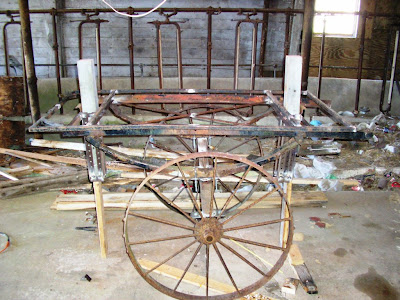Welcome Back to the Shak.
Being faced with yet another stupid hot day, I find myself confined to the house. Although we have no air-conditioning, we manage to stay somewhat cool by closing all the windows, drawing the blinds to block out the sun and turning on the furnace fan to pump the cool basement air into the rest of the house. This works well. With the relatively few days it gets this hot and living so close to Lake Michigan, air conditioning is not worth the cost.
I am not here to give you a weather report. My mission in this post is to show you what I call "Death-row". It maybe a tasteless name, but one must maintain one's sense of humor. In previous posts, you have seen the breeders and breeding cages. These are great for housing breeders and their kits up to five weeks of age. At five weeks the kits are weaned and the doe is re-bred. I generally remove the doe's five week old litter from her cage before re-breeding her. This gives her a peaceful four weeks to recover from the previous litter while producing the next.
All this is fine and good. Yet, I needed housing for the litters from the fifth week through the eighth week. They move on to the slaughterhouse after eight weeks.
When all seven breeders are breeding, I will need to house, feed and water up to fifty rabbits. Here is what I came up with and how I did it.
The slaughterhouse is connected to the big barn. The breeders are kept in the small barn conjoining the courtyard. Rather than building the pen in the small barn and having to walk rabbits across the yard, I chose an existing stall in the big barn.
The first thing was to clean the stall I will use for the rabbits and the stall beside it. A pitch fork, wheel-barrow and a little work later, I have two clean stalls. Much of the straw I cleaned out of the stall, I used to grow potatoes. Which were doing great until the chickens discovered what I was up to and dug them up. Oh well, live and learn. I will fix that little problem next year.
I then removed any boards that were not original to the stall. I also added boards to the inside of the stall to square off the corners and give me a good place to mount the convertible roof I will be adding.
The idea is to make a secure and easily maintained and cleaned enclosure with enough space to comfortably hold up to fifty rabbits. After wrapping the walls of the stall in chicken wire to keep out predators, I began on the floor. There is a cement foundation upon which the stall was built. I cut and nailed boards together to raise the floor to that height. These boards can all be removed for cleaning.
The floor itself is 1/2" x 1" wire mesh. The same material I used for the floors of the breeder cages. I bent the wire 3" from the end and nailed it to the far wall of the pen using chicken nails. This created a hinge upon which to move the floor panel up an down for cleaning. To this piece of wire I connected two other wire sections with J-clips. The floor has three sections. The whole thing folds upon itself at the far wall. This keeps it out of the way when cleaning the floor below.
Next, I built a door out of scrap lumber. This door covers the hole in the side of the pen. It is hinged and covered in 2"x4" wire overlaid with chicken wire. The 2" x 4" wire will hold feeders and waterers while the chicken wire secures the door against escape and invasion.
The boards to the right of the door being old an uneven prevented the door from sealing. To fix this, I inserted a piece of 2"x4" wood between two of the boards where the gap was widest. This block, I held in place from the backside using two other small pieces of wood and a couple screws. This filled the gap and gave me a place to mount another piece of wood to pivot over the door, thereby, locking the door.
With four walls and the floor ready, I built the roof. Here, I used 1"x4" boards I removed from the pen during clean-up. After cutting the boards to the proper length, I screwed them together and added corner supports which I nailed in place with an air nailer. To this structure, I stapled chicken wire. After placing and leveling the roof, I hinged it to the back wall of the pen and added a pull rope. The roof tilts up to a height below which I can comfortably stand while cleaning.
Thank you for stopping. Come again soon.
Being faced with yet another stupid hot day, I find myself confined to the house. Although we have no air-conditioning, we manage to stay somewhat cool by closing all the windows, drawing the blinds to block out the sun and turning on the furnace fan to pump the cool basement air into the rest of the house. This works well. With the relatively few days it gets this hot and living so close to Lake Michigan, air conditioning is not worth the cost.
I am not here to give you a weather report. My mission in this post is to show you what I call "Death-row". It maybe a tasteless name, but one must maintain one's sense of humor. In previous posts, you have seen the breeders and breeding cages. These are great for housing breeders and their kits up to five weeks of age. At five weeks the kits are weaned and the doe is re-bred. I generally remove the doe's five week old litter from her cage before re-breeding her. This gives her a peaceful four weeks to recover from the previous litter while producing the next.
All this is fine and good. Yet, I needed housing for the litters from the fifth week through the eighth week. They move on to the slaughterhouse after eight weeks.
When all seven breeders are breeding, I will need to house, feed and water up to fifty rabbits. Here is what I came up with and how I did it.
The slaughterhouse is connected to the big barn. The breeders are kept in the small barn conjoining the courtyard. Rather than building the pen in the small barn and having to walk rabbits across the yard, I chose an existing stall in the big barn.
 |
| This is the front view of the stall I chose. In the condition I found it. |
 |
| This is the side view. |
 |
| Front view of the stall after cleaning and before removing some parts and adding others. |
 |
| Side view of stall after cleaning. |
The idea is to make a secure and easily maintained and cleaned enclosure with enough space to comfortably hold up to fifty rabbits. After wrapping the walls of the stall in chicken wire to keep out predators, I began on the floor. There is a cement foundation upon which the stall was built. I cut and nailed boards together to raise the floor to that height. These boards can all be removed for cleaning.
 |
| The riser boards in place. Floor wire is folded upon itself and held out of the way by a chain and hook. |
 |
| The center wood risers removed for cleaning. The edge pieces are also removable. |
Next, I built a door out of scrap lumber. This door covers the hole in the side of the pen. It is hinged and covered in 2"x4" wire overlaid with chicken wire. The 2" x 4" wire will hold feeders and waterers while the chicken wire secures the door against escape and invasion.
 |
| Side door in place. |
 |
| View through side door. You can also see the wire floor is in place. |
 |
| Here you see the manner in which I fastened the side door closure. |
 |
| The project is finished. You can see the roof is open and floor in place. |
 |
| All done and ready for occupancy. |






































